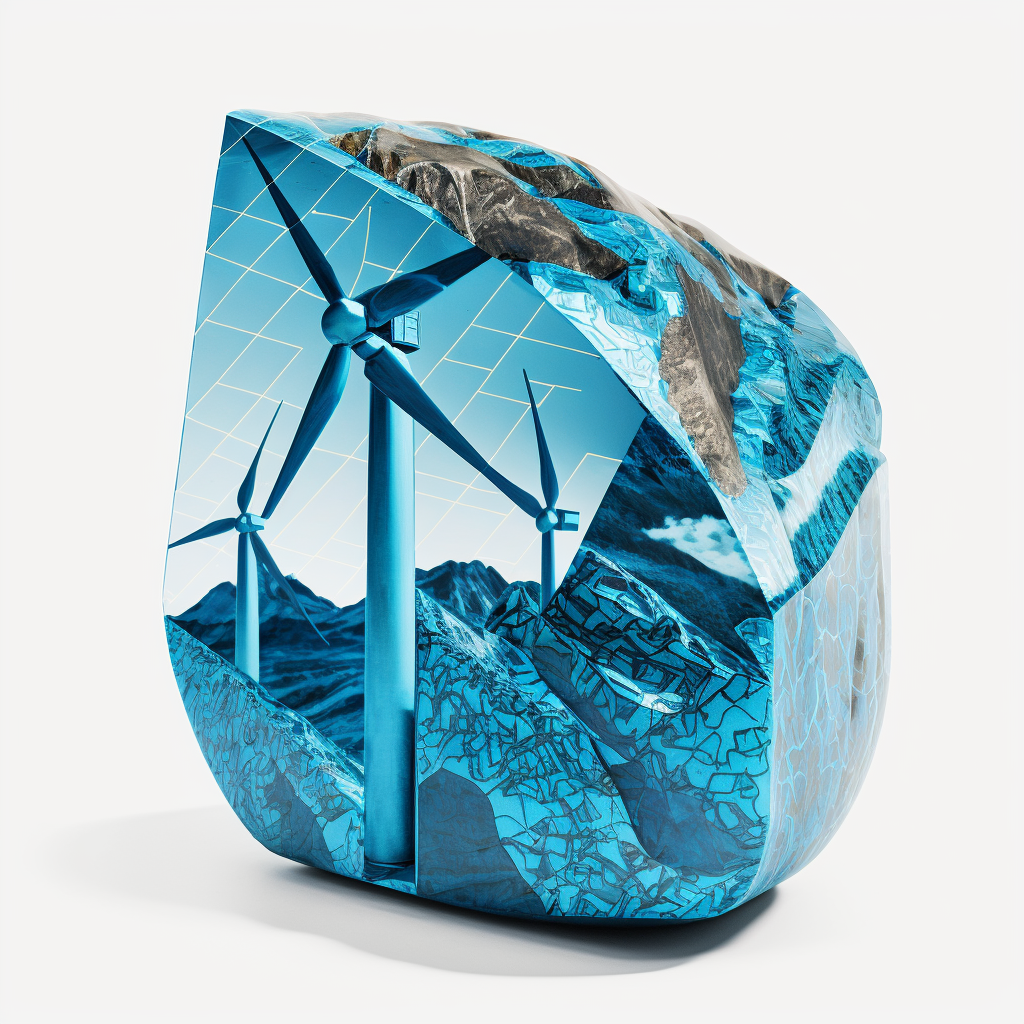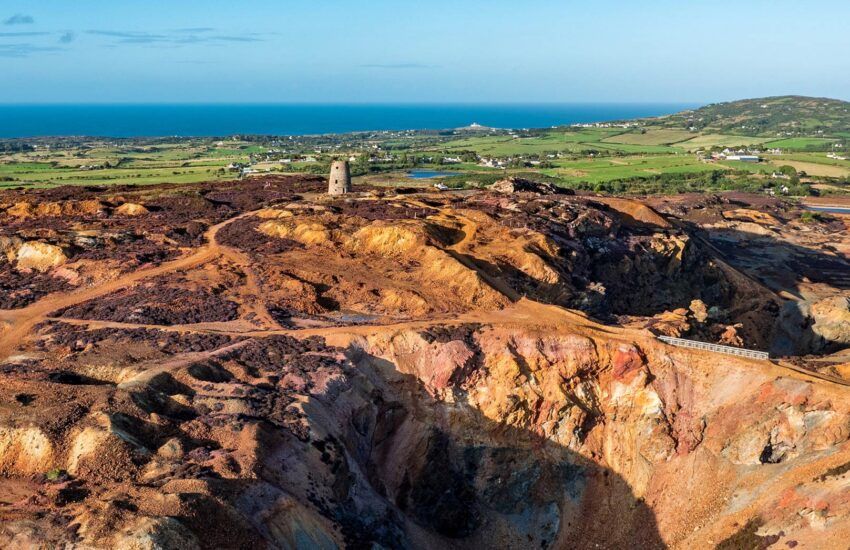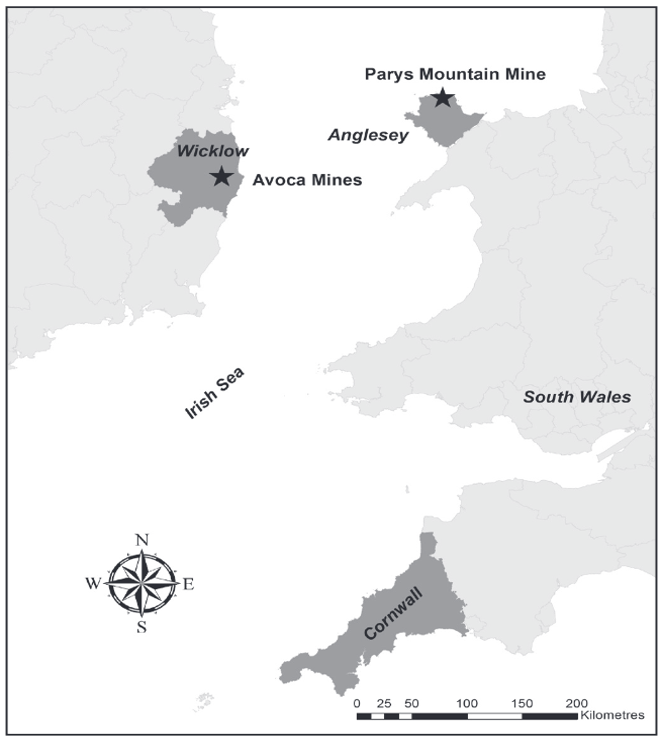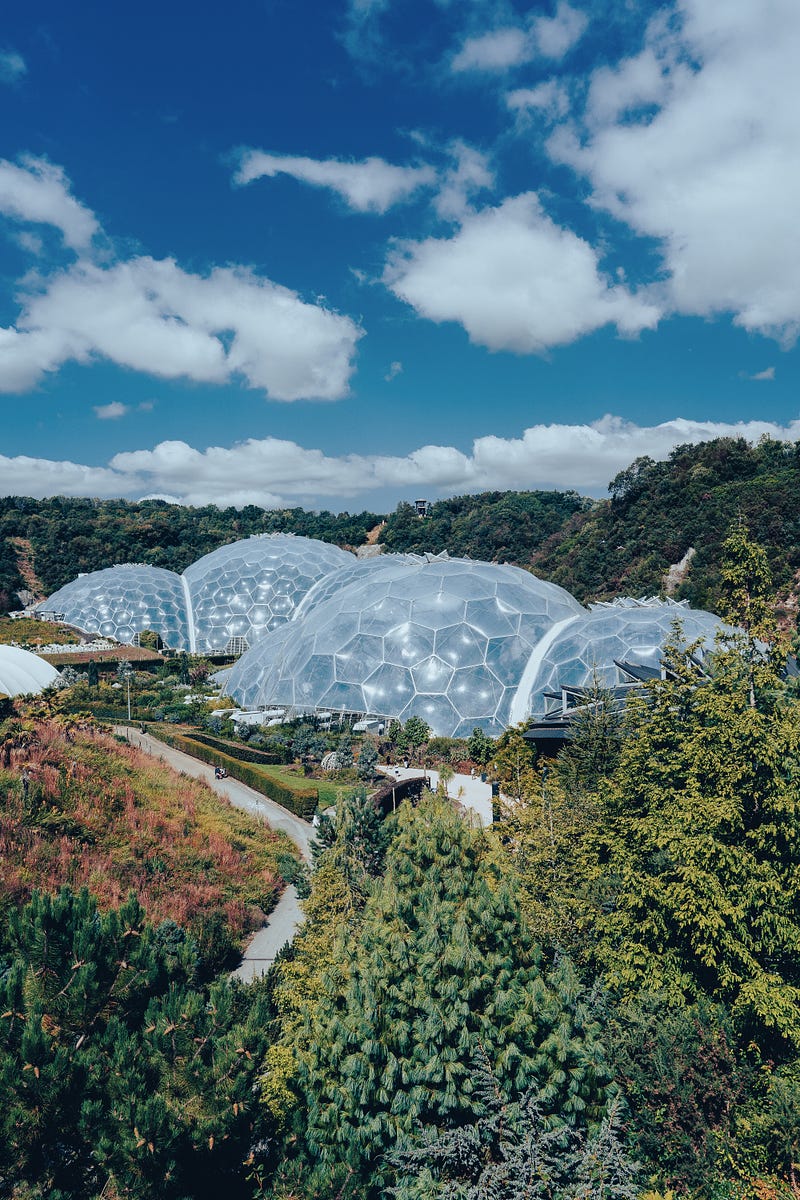Redefining Metals to Harmonize with the Contours of Land & Community

As we step into the dawn of the 'Critical Metals Age', elements such as lithium, cobalt, nickel, and rare-earth metals are poised to become the cornerstones of our sustainable future. These resources will be the lifeblood of green technologies, powering everything from electric vehicles to renewable energy systems, making our collective shift towards a carbon-neutral world possible. What can we learn from the crevices of history and how do we reconcile this learning with the urgent need for sustainability and ecological regeneration? Please join me in this brief narrative, as we explore a bio-inspired solution to metal circularity.

Let us learn from the story of Parys Mountain (or “Mynydd Parys” in Welsh), the largest copper mine in the world during the 18th century. Parys Mountain is one of the most polluting mines in the UK and for this reason it serves as an apt illustration for our need to redefine our approach to metals recovery.
A Tale from the Celtic Copper Triangle

As the sun set on the 18th century, in the heart of the verdant Isle of Anglesey, Parys Mountain (also known as “Mynydd Parys” in Welsh), towered over its surroundings. It was a part of the illustrious Celtic Copper Triangle, at the time, the largest repository of copper in the world (“Mynydd Parys Mountain” 2023; Schwartz et al. 2015). Today, the mountain’s canvas is etched in vibrant strokes of violet and fiery orange, a dramatic contrast to the placid emerald pastures and modern windmills dotting the landscape (Sarah Wardlaw 2011). An unmistakable testament to our heritage, these spectral hues, a remnant of our bygone industrial revolutions, silently recount tales of power, progress, and unintended consequences.
The Symbiosis of Industrial Technologies and Local Communities
Beneath the grandeur, however, a poignant narrative was woven. The Copper Ladies, sturdy and resolute, toiled tirelessly in long timber sheds nestled near the mines (“Copper Ladies” 2023). Clad in a uniform of iron-gloved hands and a curious ‘Jim Crow’ hat that shielded their faces, they went about their daily task of breaking and sorting ore. Their rhythmic strikes against the ore were the heartbeat of the copper industry, an indispensable pulse that echoed through the ages. They were the unsung heroines, the backbone of an empire fuelled by copper, their contribution as invaluable as the precious metal itself.
Yet, the seemingly indestructible mountain bore the scars of Acid Mine Drainage, an unpleasant reminder of the lasting environmental toll of industrial advancement (Kefeni, Msagati, and Mamba 2017; Dooner 2021). An allegory of the symbiotic relationship between progress and conservation, where the former is too often achieved at the expense of the latter. As we gaze at the shadows of our past industrial revolutions, we are presented with an opportunity to reimagine our technological narratives. This is our moment to harmonize our strides with the rhythm of nature, championing innovative solutions that uphold the principles of sustainability as outlined by the United Nations and the European Union, such as the Critical Raw Materials Act (European Commission. Directorate General for Internal Market, Industry, Entrepreneurship and SMEs. 2020; “European Critical Raw Materials Act” 2023). As we delve into the extraction of metals from recycled Li-ion batteries or the remining of tailings, our drive for progress must also consider technologies that pledge greater ecological stewardship (Martens et al. 2021).
The Critical Metals Age — Harmonizing with the Contours of Land and People
Like the Copper Ladies who once graced Parys Mountain, let us rise to the challenge of our times, striking a new balance between growth and preservation. Let our legacy be etched in vibrant hues of progressive stewardship and conservation, as inseparable as the purple and orange hues that drape Parys Mountain, an enduring testament to our industrial past and a beacon for our sustainable future.
Just as the ancient Celts tamed the wild terrain, melding their craft with the very elements to bring forth the Bronze Age, we too find ourselves standing at a similar threshold, this time with a vision painted in the hues of ecological collapse and climate change. Gazing into our shared past offers us an insightful mirror into the present and a guiding beacon to the future.

Rising majestically from the shadows of Cornwall’s heritage mines, the Eden Project today serves as a powerful symbol of this harmonious symbiosis (Blewitt 2004). A testament to the resilience of nature and the ingenuity of humankind, it showcases the art of the possible, turning scarred landscapes into verdant biomes bustling with life. Much in the same spirit, we at FungAI are at the cusp of our own Eden Project, intertwining the threads of our past with a technological hybridity that seeks to harmonize nature and progress (Bartolini and DeSilvey 2020). Our mission is to foster a bio-inspired technology that not only pushes the boundaries of what we perceive as possible but also nurture proximal communities and weave nature-friendly narratives into our landscapes.
This historical context formed the seedbed for the bio-inspired concept of FungAI, which utilizes acoustics to significantly enhance ion-permeability across the cellular and plasma membrane of the fungal hyphae (Sundaram, Mellein, and Mitragotri 2003; Liu et al. 2016; Przystupski and Ussowicz 2022). Controlled acoustic perturbation and sonoporation can serve to activate this membrane towards greater metal-ion uptake rates and enhance the extracellular and intracellular metabolites (Sun et al. 2021). The initial concept utilizes a a configuration of broadband ultrasonic transducers, which generate an acoustic excitation pattern on a custom-designed reed. This reed then excites a chamber, fashioned as a Helmholtz resonator, to frequencies in excess of 20 kHz, which serves to drastically accelerate bioaccumulation and bioleaching activity.
If interested, please join us on this journey, as we seek to foster a truly eco-centric solution for metal circularity.
References
Bartolini, Nadia, and Caitlin DeSilvey. 2020. “Making Space for Hybridity: Industrial Heritage Naturecultures at West Carclaze Garden Village, Cornwall.” Geoforum 113 (July): 39–49. https://doi.org/10.1016/j.geoforum.2020.04.010.
Blewitt, John. 2004. “The Eden Project — Making a Connection.” University of Exeter.
“Copper Ladies.” 2023. Amlwch History (blog). July 4, 2023. https://amlwchhistory.co.uk/copper-ladies/.
Dooner, Simon. 2021. “Treating Acid Mine Drainage.” Water Treatment Services (blog). October 2, 2021. https://watertreatmentservices.co.uk/treating-acid-mine-drainage/.
European Commission. Directorate General for Internal Market, Industry, Entrepreneurship and SMEs. 2020. Critical Raw Materials for Strategic Technologies and Sectors in the EU :A Foresight Study. LU: Publications Office. https://data.europa.eu/doi/10.2873/865242.
“European Critical Raw Materials Act.” 2023. Text. European Commission — European Commission. 2023. https://ec.europa.eu/commission/presscorner/detail/en/ip_23_1661.
Kefeni, Kebede K., Titus A. M. Msagati, and Bhekie B. Mamba. 2017. “Acid Mine Drainage: Prevention, Treatment Options, and Resource Recovery: A Review.” Journal of Cleaner Production 151 (May): 475–93. https://doi.org/10.1016/j.jclepro.2017.03.082.
Liu, Shengrong, Weirui Zhang, Yunbo Kuang, and Shengyang Zheng. 2016. “Sonoporation of Ganoderma Lucidum Mycelium for High Biomass and Exopolysaccharide Productivity in Submerged Culture.” International Journal of Agriculture and Biology 18 (04): 773–79. https://doi.org/10.17957/IJAB/15.0165.
Martens, Evelien, Henning Prommer, Riccardo Sprocati, Jing Sun, Xianwen Dai, Rich Crane, James Jamieson, Pablo Ortega Tong, Massimo Rolle, and Andy Fourie. 2021. “Toward a More Sustainable Mining Future with Electrokinetic in Situ Leaching.” Science Advances 7 (18): eabf9971. https://doi.org/10.1126/sciadv.abf9971.
“Mynydd Parys Mountain.” 2023. The Copper Kingdom / Y Deyrnas Gopr (blog). July 4, 2023. https://copperkingdom.co.uk/mynydd-parys-mountain/.
Przystupski, Dawid, and Marek Ussowicz. 2022. “Landscape of Cellular Bioeffects Triggered by Ultrasound-Induced Sonoporation.” International Journal of Molecular Sciences 23 (19): 11222. https://doi.org/10.3390/ijms231911222.
Sarah Wardlaw, dir. 2011. Parys Mountain, Amlwch. https://www.youtube.com/watch?v=3s2680QWtB0.
Schwartz, Sharron P, Martin Critchley, Marie Merrigan, and Ainsley Cocks. 2015. “‘CONTESTED SPACES’: IMAGININGS OF POST-INDUSTRIAL MINING LANDSCAPES, THE CASE OF AVOCA, COUNTY WICKLOW.” Journal of the Mining Heritage Trust of Ireland, no. 15.
Sun, Ling, Liping Liu, Lei Yang, Yazhen Wang, Mokhtar Dabbour, Benjamin Kumah Mintah, Ronghai He, and Haile Ma. 2021. “Effects of Low‐intensity Ultrasound on the Biomass and Metabolite of Ganoderma Lucidum in Liquid Fermentation.” Journal of Food Process Engineering 44 (1). https://doi.org/10.1111/jfpe.13601.
Sundaram, Jagannathan, Berlyn R. Mellein, and Samir Mitragotri. 2003. “An Experimental and Theoretical Analysis of Ultrasound-Induced Permeabilization of Cell Membranes.” Biophysical Journal 84 (5): 3087–3101. https://doi.org/10.1016/S0006-3495(03)70034-4.

